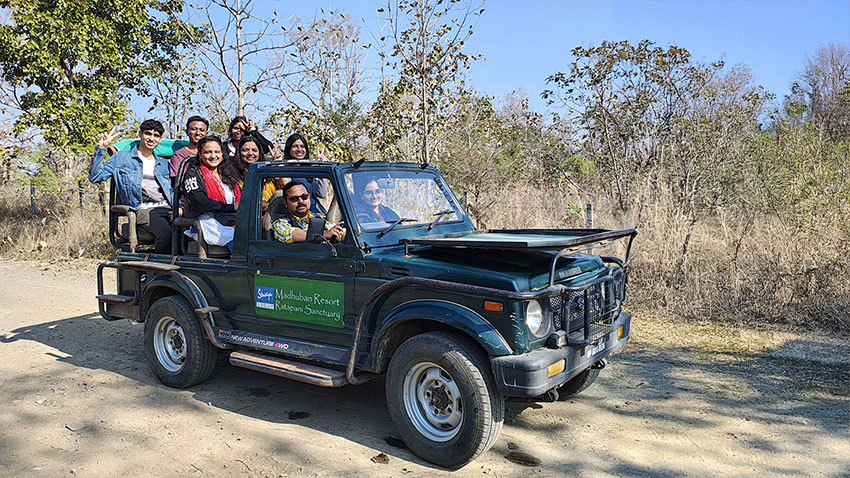
In the month of January, students from Somaiya Vidyavihar University and Somaiya Ayurvihar stepped beyond the confines of textbooks to embark on a 3 days transformative experiential learning program at Madhuban Resort by Somaiya in Bhopal. This initiative, conceptualized by Dr Urmi Thakkar, was skillfully executed by the Somaiya Centre for Experiential Learning, offering students an opportunity to engage with nature, history, and innovation in an interdisciplinary setting.
Upon arrival, students set up camp in tents on the Madhuban Resort campus, nestled within the core of the Ratapani Wildlife Sanctuary. For many, it was their first camping experience—pushing them out of their comfort zones while equipping them with essential life skills. Immersing themselves in the pristine natural surroundings, students explored the forested stretch within the campus, where they were thrilled to discover fortnight-old tiger pugmarks. Mr Shibajee Mitra, an expert naturalist, and Manager at the resort demonstrated the functionality of a camera trap installed in the area, showing how these devices help capture footage of elusive wildlife, including tigers. The combination of the lush environment and delicious meals at the resort’s dining area quickly fostered a deep connection to the place, leaving students longing to return even before the program ended.
Star Gazing: A Glimpse into the Universe
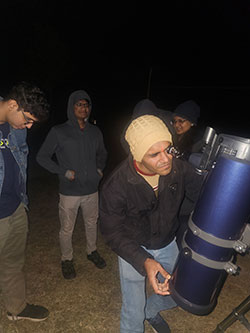
On the first evening, students participated in a star-gazing session in the open garden area of the resort. Mr Abhay Shukla from the Regional Science Centre, Bhopal, had set up a reflecting telescope to observe celestial bodies visible that night. Students marveled at Venus, Mars, Jupiter, and the Andromeda Galaxy, with the Barlow lens providing a detailed view of Jupiter’s bands and four of its moons. They also glimpsed a stellar nursery— a nebula where new stars were forming.
Throughout the session, Mr. Abhay engaged students with thought-provoking questions and fascinating astronomical facts. He explained how some of the stars we see in the night sky no longer exist, their light still traveling to us across vast cosmic distances.
Bhimbetka Rock Shelters: A Walk Through Time
One of the early highlights of the program was a visit to the Bhimbetka rock shelters, a UNESCO World Heritage Site situated in the foothills of the Vindhyan Mountains. These shelters house India’s oldest known rock art, with paintings spanning the Paleolithic to Medieval periods—evidence of continuous human habitation over millennia.
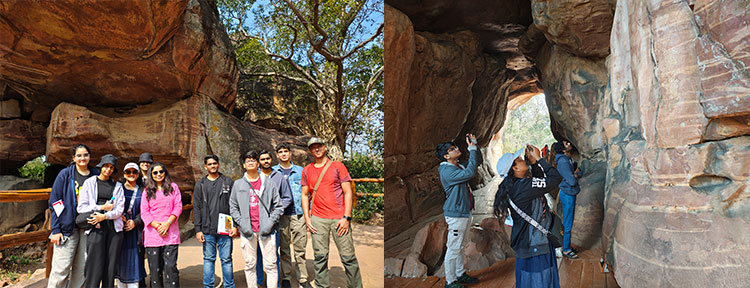
Guided by Mr. Shibajee Mitra, students engaged in reflection exercises using specially designed learning journals to deepen their observations. They analyzed evolving artistic techniques, comparing prehistoric depictions of animals with later paintings illustrating hunting scenes and dancing rituals. The journals encouraged them to question how belief systems influenced artistic themes, prompting discussions on whether religious beliefs led to a shift in artistic expression. This immersive experience offered a rare window into prehistoric life and the role of art in human storytelling.
Saru Maru Caves: Tracing the Footsteps of Buddha
A short distance from Bhimbetka, students visited the Saru Maru Caves, an ancient monastic complex and Buddhist site. The caves hold special historical significance, as they were once visited by Gautama Buddha himself, and later by Emperor Ashoka, whose inscriptions on stone still stand today.
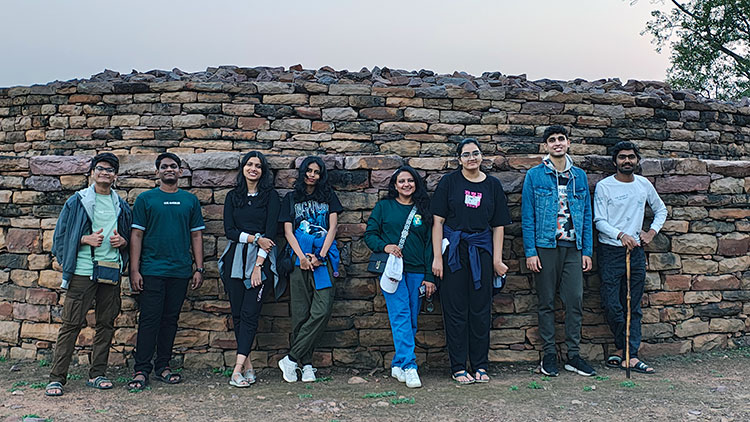
Beyond the caves, students explored the numerous stupas built by Buddhist monks and prehistoric rock paintings-offering a unique opportunity to compare artistic styles from pre-Buddhist and Buddhist periods. This visit not only enriched their understanding of India’s cultural heritage but also offered insights into sustainable living practices followed by ancient inhabitants.
Nature Trail: A Deep Dive into the Wilderness
Led by Dr Shibajee Mitra, students embarked on an early morning nature trail through the dry deciduous forests of Ratapani Wildlife Sanctuary. For many, this was their first-ever nature trail experience—where even the crunching of dry leaves underfoot added to the sensory immersion.
Along the way, students encountered local flora, including Palash and Dhabra trees, and spotted tiger scratch marks on tree bark. Mr Shibajee explained the significance of these markings, detailing the multiple reasons tigers leave scratches and their preference for specific trees. Further along the trail, students were introduced to the concept of percolation pits, a method used in forest conservation to enhance groundwater recharge.
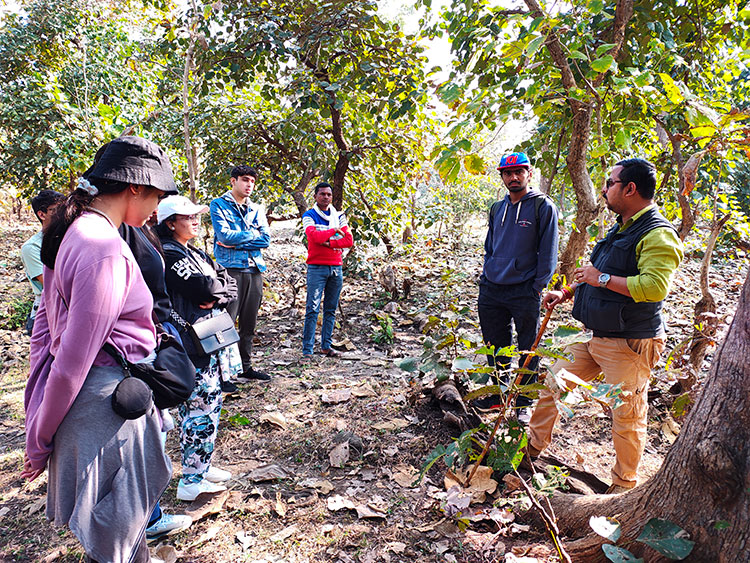
Tribal Museum: A Journey into Indigenous Cultures
A visit to the Bhopal Tribal Museum provided students with an immersive introduction to the rich tribal heritage of Madhya Pradesh. The museum featured life-size tribal dwellings, allowing students to step inside and experience authentic recreations of daily life. The dim lighting in these sections mimicked the traditional fuel-based illumination used in tribal homes, adding to the realism of the experience.
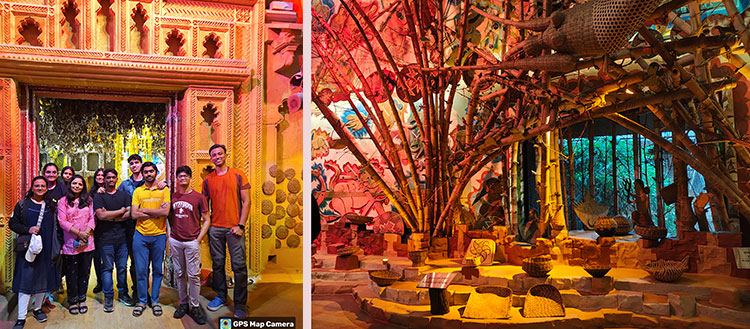
Large art installations and visual storytelling displays depicted cultural beliefs, rituals, and mythologies of different tribes. Students spent time analyzing these exhibits and reflecting on how indigenous knowledge systems have evolved. The learning journal exercises encouraged deeper observations, prompting students to critically engage with the tribal narratives showcased in the museum.
Republic Day Celebration at The Somaiya Vidya Mandir, Rehti
On Republic Day, students attended the flag-hoisting ceremony at the newly built Somaiya School, located near Madhuban Resort. They were deeply inspired by the school’s sustainable design, which blended environmental consciousness with heritage conservation. The walls were adorned with tribal art tailored for young learners, seamlessly integrating traditional storytelling with modern pedagogy.
Survival Skills Workshop: Learning to Adapt and Innovate
On the final day, Dr. Arun Rai, a survival expert, conducted a hands-on survival skills workshop. One of the activities involved a thought experiment, where students devised survival strategies for being stranded on a tropical island. Another challenge required them to construct makeshift tents from available materials, testing their structural resilience against simulated wind and rain. Students also practiced pitching real tents, equipping them with essential outdoor survival skills.
From Learning to Action: Multidisciplinary Projects
The program deepened students’ connection to the region, with many expressing a strong desire to return—not just as visitors but as contributors to forest conservation and rural development.
In a concluding discussion with Mr. Shibajee Mitra and Mr. Anuj, Director of Somaiya Group, Madhya Pradesh, students explored real-world challenges faced in the forested region. This led to the formation of multidisciplinary teams, working on:
- Enhancing data analytics for the Madhuban Resort website
- Developing a solar-powered camera trap that reduces battery maintenance
- Creating an IT-based early detection system for forest fires
Through this initiative, students recognized the immense potential of experiential learning—not just as an academic exercise, but as a platform to contribute meaningfully to conservation, innovation, and community well-being.


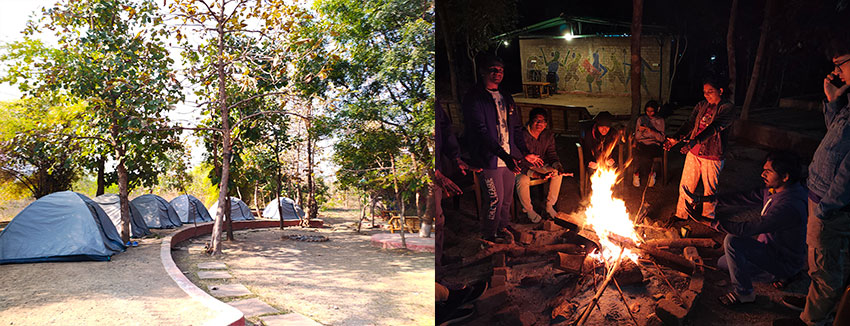
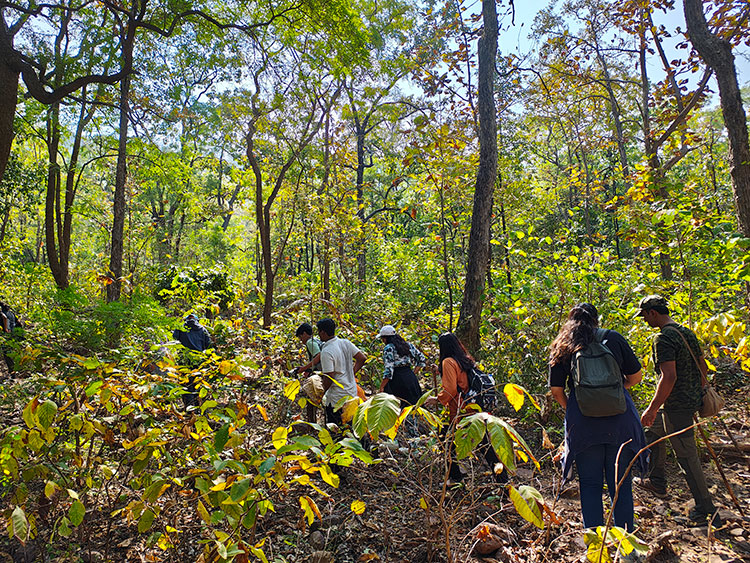
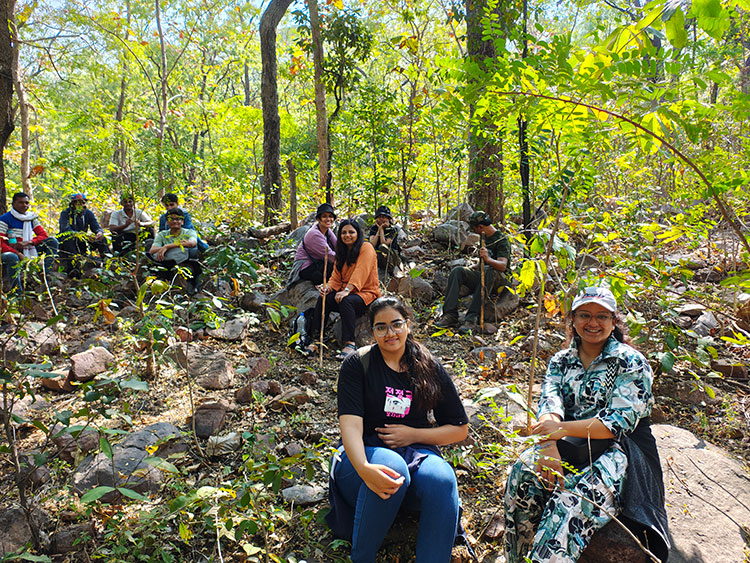




Leave a Reply